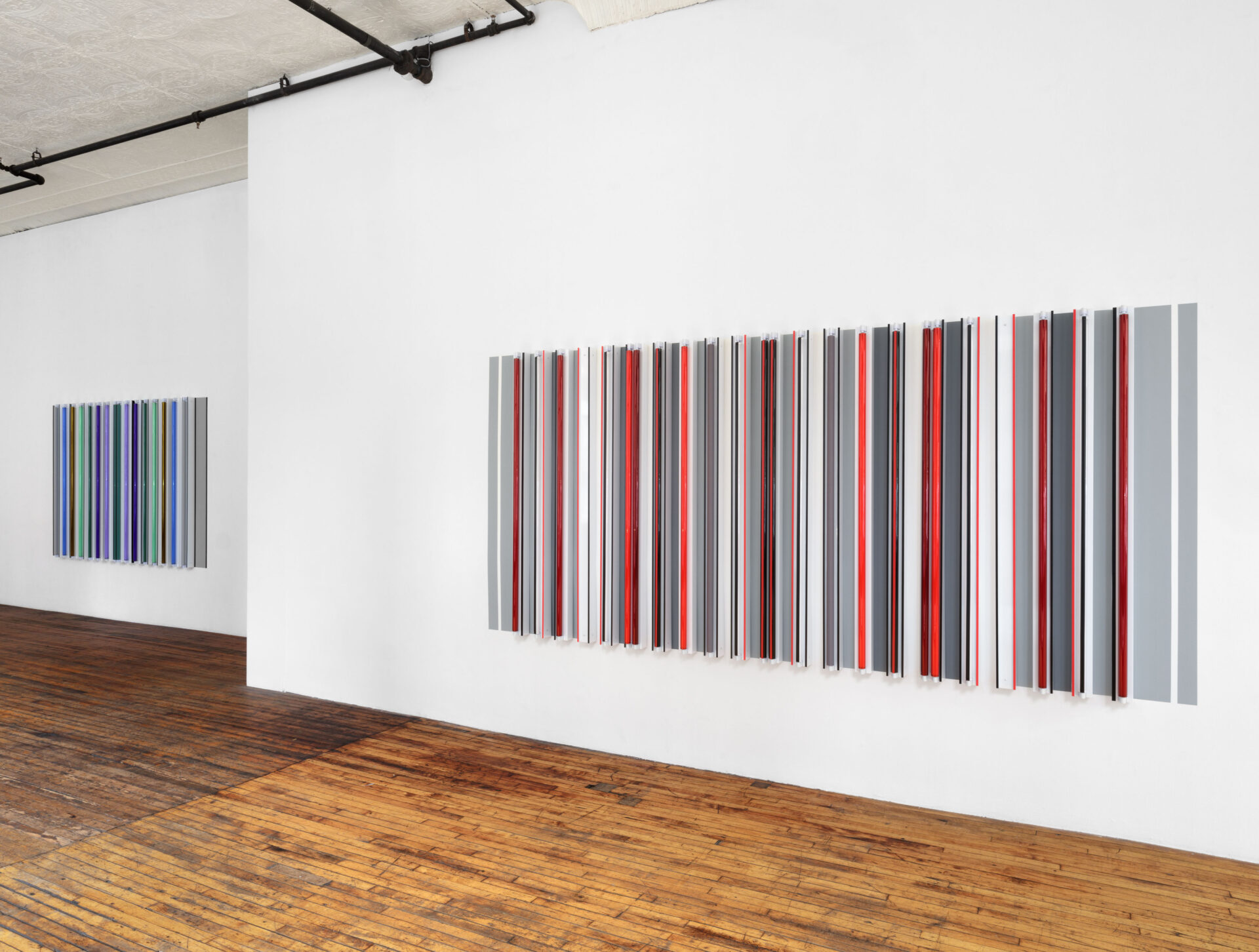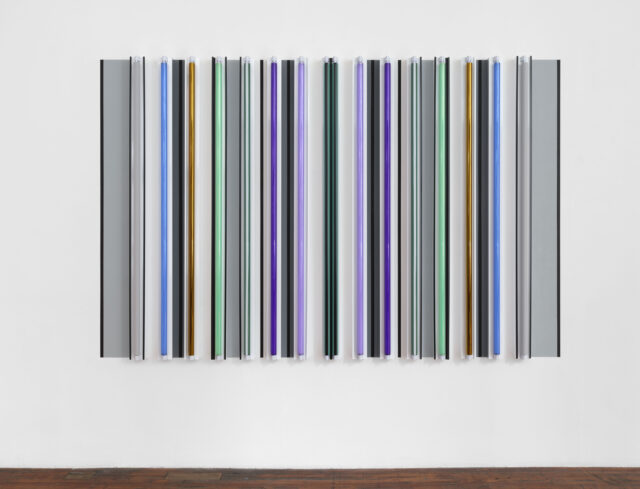Robert Irwin
April 4–August 31, 2024
101 Spring Street
New York, NY

Robert Irwin
April 4–August 31, 2024
101 Spring Street
New York, NY

Judd Foundation presents Robert Irwin, an exhibition of three works at 101 Spring Street in New York. The exhibition marks the first posthumous presentation of Robert Irwin’s work in the United States and extends inquiries into visual perception made by the artist in the same space more than fifty years ago.
Sculpture/Configuration 2T 3L (2018), a column of layered acrylic units, features a material and form first utilized by Irwin in the late 1960s. Measuring nearly ten feet in height and comprised of gray and green acrylic sheets, the work is installed in the same location as one of Irwin’s single twelve-foot columns exhibited in the space in 1971. The columns engage, as writer Lawrence Weschler summarizes, “the incidental, the transitory, the peripheral—that aspect of our experience that is both there and not there, the object and the not object of our sensations, perceived but seldom attended to.”
The sculptures AS GOOD AS IT GETS (2023) and “C and C” (Complex/Coherent) (2021) define three ephemeral elements of perception Irwin engaged throughout his practice: shadow, reflection, and color. Part of Irwin’s unlights, a series first shown in New York in 2020, these works include fluorescent tubes and fixtures installed directly on the walls of the space interspersed with translucent color gels. These compositions, in colors ranging from blue, green, and gray to red, purple, and brown, emit no light themselves, yet create interactions with natural light and reflections on the glass and aluminum.
The first exhibition of Irwin’s work at 101 Spring Street (April 24–May 29, 1971) consisted of a single acrylic column, installed in the building’s ground floor space. The work, installed by Irwin and Donald Judd with Pace Gallery, was sited to respond to light from southern and western exposures. Interested in space and human perception, Irwin and Judd both made works utilizing materials and installations that involved the surrounding architecture, challenging what was considered art. As Irwin wrote, “Like time and space, it [art] has no actual physical properties. Or infinite physical properties.” In his introductory essay on the Chinati Foundation/La Fundación Chinati in Marfa, Texas, Judd included Irwin among the artists whose work was yet to be installed there. In 2016, Irwin’s site-considered work untitled (dawn to dusk) was completed at Chinati and is the only permanent, free-standing structure conceived and designed by the artist.
Curated by Flavin Judd, Artistic Director of Judd Foundation, and organized in partnership with the Estate of Robert Irwin and Pace Gallery, the exhibition will be accompanied by public programs and special extended hours.
Robert Irwin is part of Judd Foundation’s ongoing exhibition series in New York. Since 2015, the Foundation has organized exhibitions of works by Rosemarie Castoro, John Chamberlain, Dan Flavin, Felix Gonzalez-Torres, Yayoi Kusama, Richard Long, David Novros, James Rosenquist, Lauretta Vinciarelli, and Meg Webster. These exhibitions continue the historical use of the ground floor of 101 Spring Street as a public exhibition space by Judd.
[1]Lawrence Weschler, Seeing Is Forgetting the Name of the Thing One Sees: Over Thirty Years of Conversations with Robert Irwin (Berkeley: University of California Press, 2008), 115.
[2] Robert Irwin, “Notes Towards a Model,” in Robert Irwin, exhibition catalogue (New York: Whitney Museum of American Art, 1977), 23-31.
[3] Donald Judd, “Statement for the Chinati Foundation/La Fundación Chianti” (1987), in Donald Judd Writings, ed. Flavin Judd and Caitlin Murray (New York: Judd Foundation/David Zwirner Books, 2016), 488.
Robert Irwin (b. 1928, Long Beach, California; d. 2023, La Jolla, California) was a pioneering figure of the Los Angeles–based Light and Space movement of the 1960s. Beginning his career as a painter, Irwin later began exploring perception and light with his acrylic columns and discs. In 1969, he gave up his studio and began what he termed a conditional practice, working with the effects of light through subtle interventions in space and architecture. Irwin employed a wide range of media—including fluorescent lights, fabric scrims, colored and tinted gels, paint, wire, acrylic, and glass—in the creation of site-conditioned works that respond to the context of their specific environments.

Robert Irwin is made possible with support from Pace Gallery.